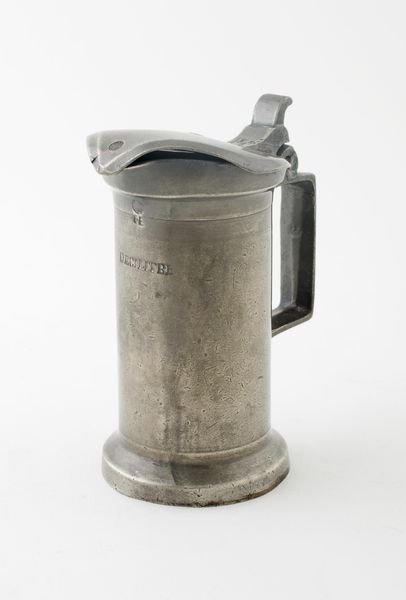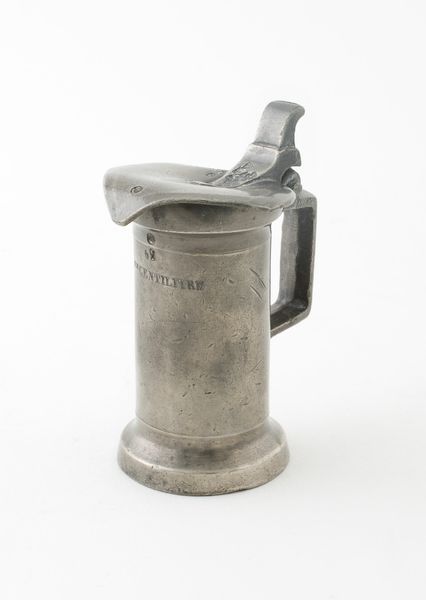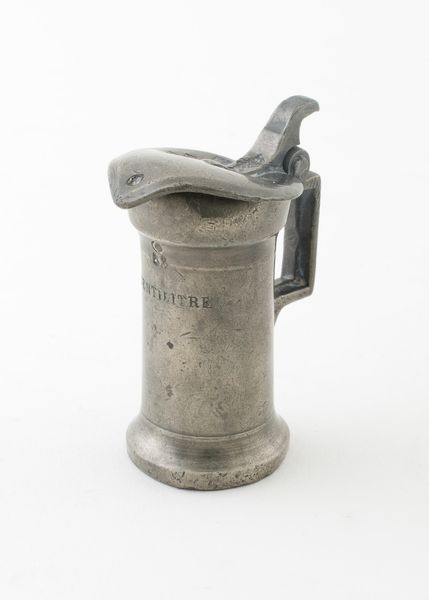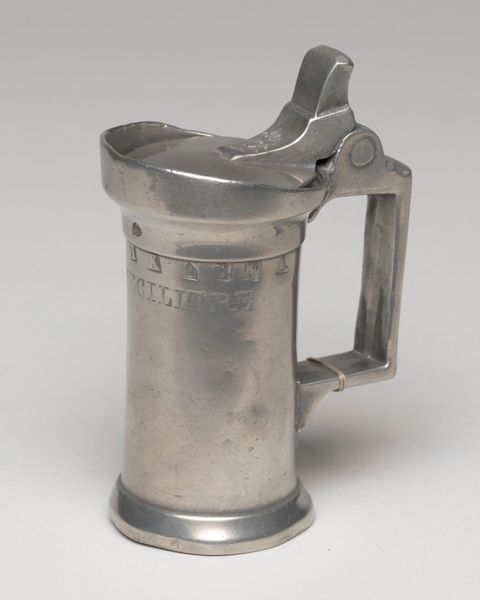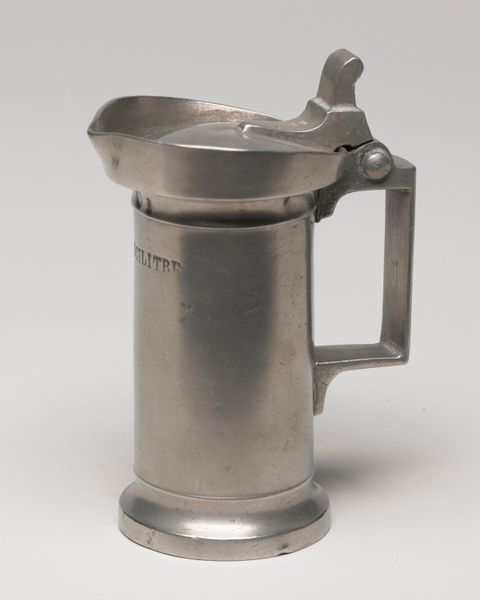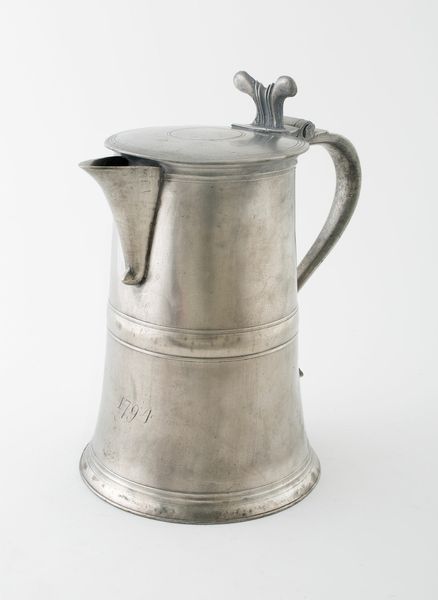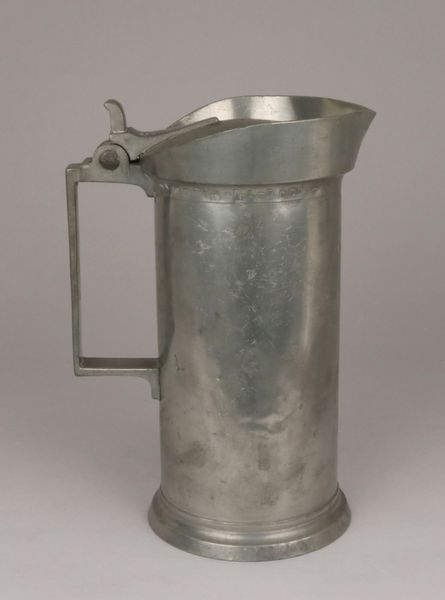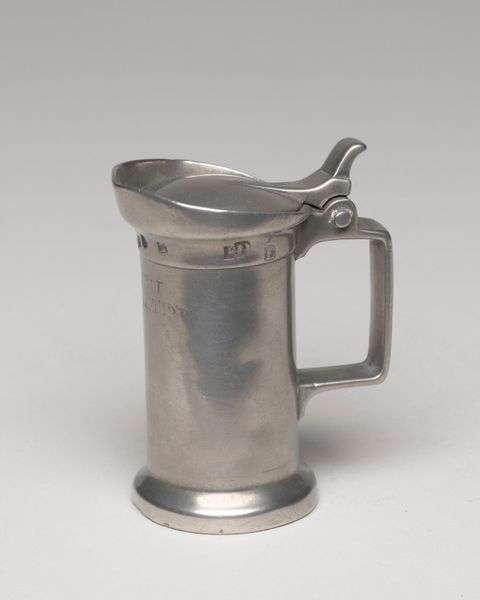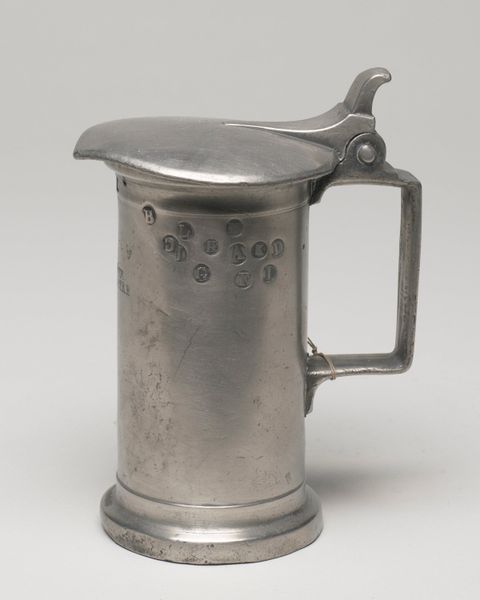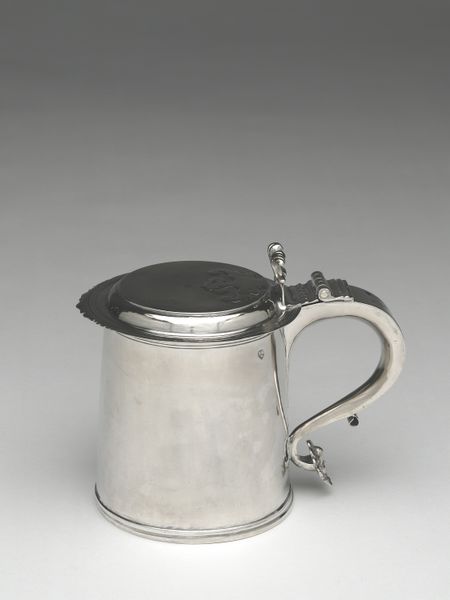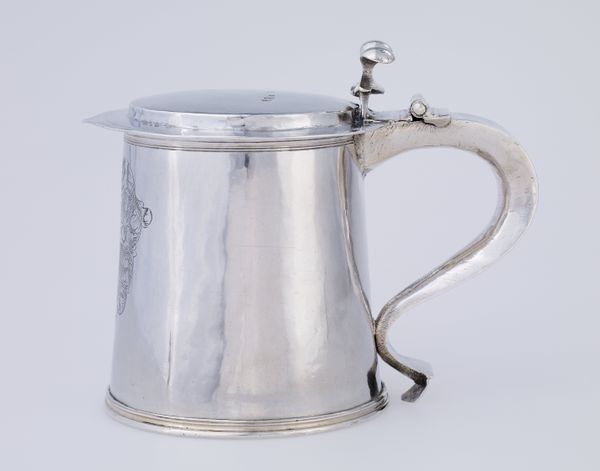
metal
#
metal
#
stoneware
#
decorative-art
Dimensions: 8.9 × 7 cm (3 1/2 × 2 3/4 (incl. handle) in.)
Copyright: Public Domain
Curator: Standing before us is “Measure,” a work made sometime between 1875 and 1895 attributed to the workshop of Le Seigneur, Caen. It resides in the collection of The Art Institute of Chicago and appears to be crafted from metal. Editor: My immediate reaction is to the austere simplicity of this piece. It exudes functionality; every element, from the sturdy handle to the hinged lid, speaks to a singular purpose: precise measurement. The muted tone only heightens its unpretentious nature. Curator: Yes, the construction is crucial to understand its purpose. Given the rise of standardized units and burgeoning trade in the late 19th century, an accurate measure, signified here with "DEMI-LITRE" inscribed on its side, held significant economic value and social implications. We can consider it as a commodity in its own right. Editor: Precisely! And think about its use. In the context of rapidly growing urban centers of that time, this "Measure" likely played a silent role in the daily lives of vendors and consumers, embodying new standards for an increasingly industrializing world. How these standardized vessels potentially changed the dynamic of local markets, that's compelling to me. Curator: It speaks to a broader narrative, doesn't it? We have here a democratization of volume; this piece ensures equity. It's also interesting that pewter vessels of similar ilk were prevalent. Metal offers a certain resilience for repeated use. Editor: Do you believe that pewter might reflect larger economic shifts as cheaper metal products rose with industrial advancements, becoming increasingly common and displacing older or more bespoke artisanal glassware, thus becoming accessible to lower classes? Curator: Possibly, yes! But let’s also remember that items such as this aren’t simple functional artifacts; consider their integration within existing collections and the ongoing interpretation as relics. Editor: Ultimately, both perspectives offer complementary readings. Recognizing material and considering its role in commerce sheds light on a tangible way technology mediated social experience. Curator: Precisely. Examining history in dialogue with material shifts invites visitors to rethink our contemporary assumptions about the roles of functionality, measurement and exchange that this piece represents.
Comments
No comments
Be the first to comment and join the conversation on the ultimate creative platform.

